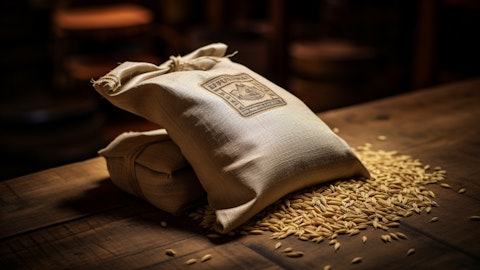Bryon McGregor: Yes. So, we would probably expect to see those somewhere around beginning first quarter, second quarter of next year. Still a lot of the lift that’s going to occur would be down payments on compression technology, right making sure that you’re in your queue and you’ve got the system starting to be built. And, there won’t be on a relative basis the cost associated with developing the pipeline and the injection system really doesn’t occur until after you’ve got your Class VI permit in place. So, it’s a combination of things. But and again that would be largely for the account of Vault, where ours will be more of a growing spend over that same period of time call it 36 months of expense beginning mostly in next year.
And that’s, why it’s important as well to bring the financial resources to the table to be able to connect the dots pretty well. And, so you know what’s on balance sheet, what’s being addressed elsewhere and how we’re going to make those ends meet.
Amit Dayal: Understood. Okay. Thank you, Bryon. Just last one for me. In the presentation, you highlight pursuing other opportunities like SAF etcetera. How should we read into that? I mean, is this sort of a serious effort already underway or are you just sort of exploring at a high-level? Just trying to get a sense of, how some of those developments might take place?
Bryon McGregor: Well, there’s clearly a lot of interest around SAF. There’s a lot of resources that are going into it not necessarily at Alto. Our focus is early around being able to make the product that would be eligible for SAF. That said, I think there’s a lot of work that and a lot of lifting that still needs to be done between now and when our product is available. A lot of things can change, but I think there’s a really a growing interest and particularly with the latest treasury announcements. There is now a pathway and there’s an opportunity to be able to really make where you have the ability to be able to capture the CO2 and sequester to really make a difference and be able to produce product that is eligible for and available to support the SAF industry.
Amit Dayal: Got it. Yes, that’s all I have, guys. Thank you so much.
Operator: [Operator Instructions] Your next question comes from David Bastian with Kingdom Capital Advisors.
David Bastian: Hi, thanks guys. Couple of quick ones. You mentioned you expected the co-product revenues to be down for the remainder of the year, at least as a percentage of sales. Is that expected to be roughly ratable to last year in terms of percentages or are there any major puts and takes we should be thinking about?
Bryon McGregor: It’s tough to say at the moment. I think we’re down, I don’t know, 20% as an industry if you look across the various different products, 20%, 30% from the peaks of last year. It’s difficult to know whether there’ll still continue to be some progression. I mean, there’s still clearly a spread significant benefit in that. And, it’s still it’s a compelling argument as to why you should be differentiating your product as much as possible taking advantage of that. But, and that goes from everything from corn oil to high-protein value products. That said, you’re just not seeing the peaks that you would otherwise would have seen a year ago. And, I don’t that our expectation is that that’s going to be a bit of the cycle, right?
You need to be able to produce product that then makes its way. And, there are times where you’ll have excess product and it will soften prices and then demand will grow and find a place for it and you’ll start to see prices start to increase. Still doesn’t know exactly the length of that cycle, but we do know over the long run that there is significant demand for the products. And, so our expectation is to see over the long run that those are the kind of investments that we should be making as well. And, there’s an opportunity to get to further differentiate the kinds of products that we make and we will be willing to pay for that.
David Bastian: Okay. Thanks, Bryon. Thanks for the color on the CapEx with carbon as well. I was curious if outside of the carbon capture opportunity, you guys expect CapEx to be at a similar level to last year as well on a quarterly basis or if there’s any major changes there that we should be thinking about?
Rob Olander: Yes. I believe last year we had about $30 million in CapEx for 2023, and I believe $40 million the year before. This year we lowered the target to not to exceed $25 million and with about $4.5 million to $4.7 million in CapEx in Q1, we feel that we’re coming in at that plan. So David, is your question is that going to be ratable? Or are you looking at, are you asking if there’s going to be a low and a big spend in other periods or? Let me understand the question.



